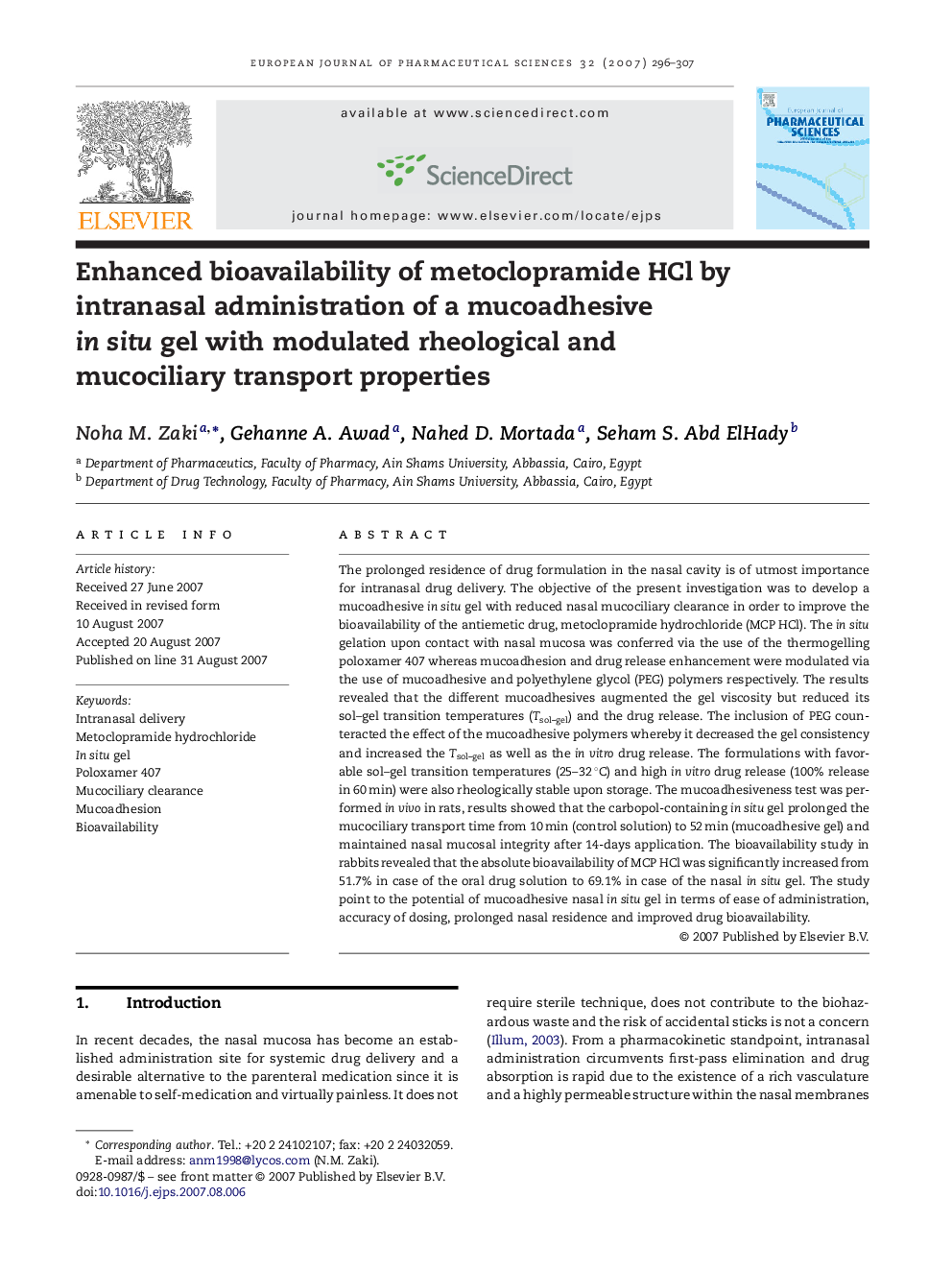| Article ID | Journal | Published Year | Pages | File Type |
|---|---|---|---|---|
| 2481874 | European Journal of Pharmaceutical Sciences | 2007 | 12 Pages |
The prolonged residence of drug formulation in the nasal cavity is of utmost importance for intranasal drug delivery. The objective of the present investigation was to develop a mucoadhesive in situ gel with reduced nasal mucociliary clearance in order to improve the bioavailability of the antiemetic drug, metoclopramide hydrochloride (MCP HCl). The in situ gelation upon contact with nasal mucosa was conferred via the use of the thermogelling poloxamer 407 whereas mucoadhesion and drug release enhancement were modulated via the use of mucoadhesive and polyethylene glycol (PEG) polymers respectively. The results revealed that the different mucoadhesives augmented the gel viscosity but reduced its sol–gel transition temperatures (Tsol–gel) and the drug release. The inclusion of PEG counteracted the effect of the mucoadhesive polymers whereby it decreased the gel consistency and increased the Tsol–gel as well as the in vitro drug release. The formulations with favorable sol–gel transition temperatures (25–32 °C) and high in vitro drug release (100% release in 60 min) were also rheologically stable upon storage. The mucoadhesiveness test was performed in vivo in rats, results showed that the carbopol-containing in situ gel prolonged the mucociliary transport time from 10 min (control solution) to 52 min (mucoadhesive gel) and maintained nasal mucosal integrity after 14-days application. The bioavailability study in rabbits revealed that the absolute bioavailability of MCP HCl was significantly increased from 51.7% in case of the oral drug solution to 69.1% in case of the nasal in situ gel. The study point to the potential of mucoadhesive nasal in situ gel in terms of ease of administration, accuracy of dosing, prolonged nasal residence and improved drug bioavailability.
